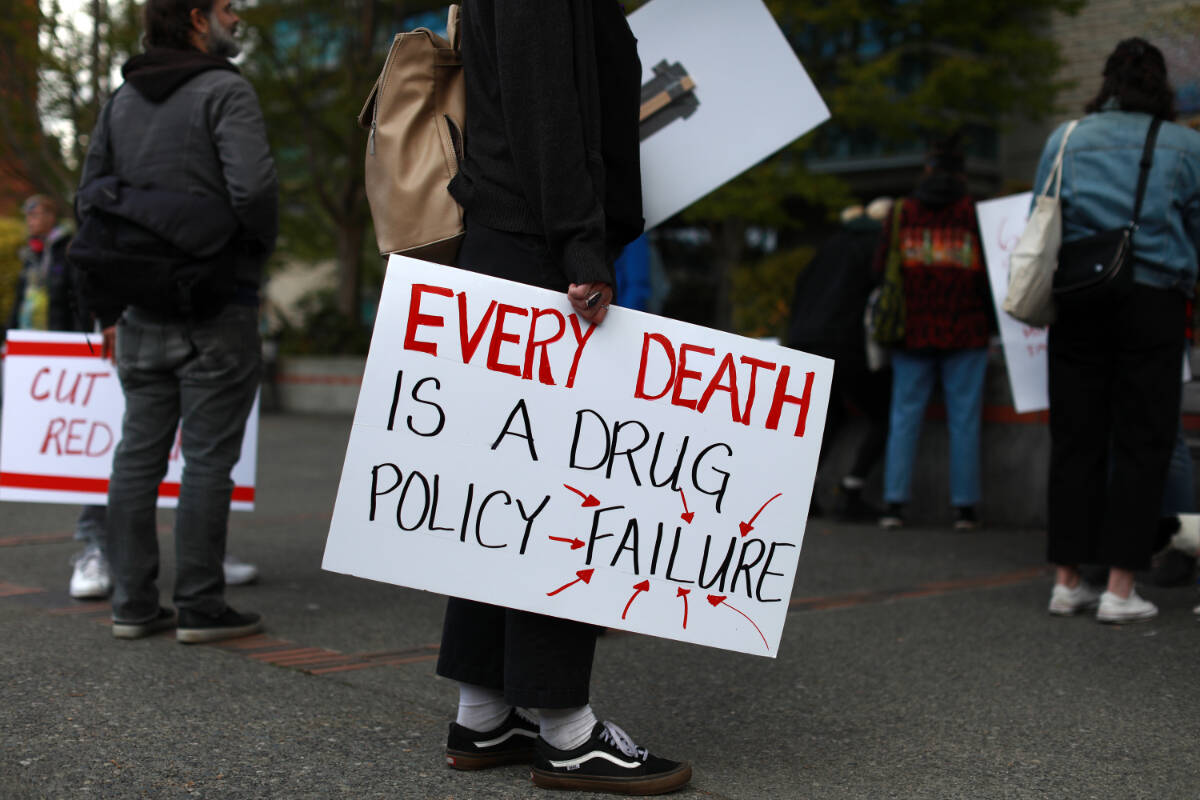A new study has found more than a third of people who use drugs in Vancouver have reported a decline in the quality of drugs during the pandemic.
Researchers from Simon Fraser University, British Columbia Centre on Substance Use, UBC, Curtin University and the Burnet Institute Behaviours and Health Risks Program in Melbourne, Australia carried out the study — together with co-authors who included people with lived and living substance use experience.
They surveyed 738 people who use drugs and found 272 people or 36.9 per cent of those surveyed reported a decline in drug quality. Those who reported a decline in drug quality were far more likely to have experienced a non-fatal drug overdose, as well as frequent injection or stimulant drug use.
Individuals who used stimulants were far more likely to report a decline in drug quality. Despite a major focus on opioids as being the drug most related to fatal overdoses, the B.C. Coroners Service found cocaine use was related to 46.2 per cent of deaths from 2019 to 2021.
READ MORE: ‘Death penalty situation’: 6 years ago, B.C. declared toxic drug poisonings a health emergency
“The perception is that it’s the toxic drug supply of opioids that is killing people, but contaminated stimulants are also killing a high number of stimulant users,” says Kali Sedgemore, study co-author and a youth harm reduction and peer navigator/supervisor with Molson Overdose Prevention Site and Mobile Unit in Vancouver. “Many youths rely on stimulants as a survival tactic to stay safe, alert and protect themselves on the streets. Harm reduction and other services would help to support these realities for young people.”
The findings are consistent with previous research from the International Network of People Who Use Drugs, which found 50 to 70 per cent of respondents globally reported that the quality of drugs declined during the pandemic.
Researchers believe the decline in drug quality was related to border control measures to stop the spread of COVID-19. Those measures accelerated the trafficking of fentanyl and analogues through the mail while causing interruptions in the production of methamphetamine and heroin.
The unregulated, toxic drug supply in B.C. is the reason why so many people are dying from overdoses. Drug samples collected by B.C.’s Community Drug Checking programme found fentanyl contamination in 79 per cent of opioids and an increased presence of benzodiazepines in the drug supply.
“If anyone is still wondering why overdoses are continuing at rates higher than ever, they just need to look at the drug supply,” says Dean Wilson, study co-author and peer engagement lead with the BC Centre on Substance Use.
“The supply first became more unpredictable in 2016. What happened? People died. In 2020, the supply got worse and more dangerous. What happened? More people died. The drug supply is killing people. Regulate drugs and get people access to a safer supply, where they know what they’re using.”
READ MORE: More than 5 British Columbians died a day from toxic drug poisoning in March
@SchislerCole
cole.schisler@bpdigital.ca
Like us on Facebook and follow us on Twitter.

